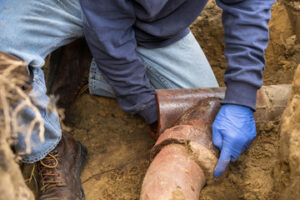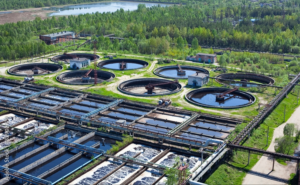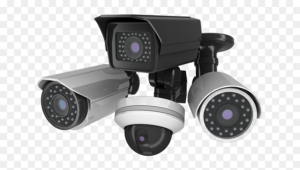Plumbing Clearwater Florida is one of the most vital services in any home. It ensures we have access to clean water and that waste is properly disposed of. Without proper plumbing, life would be much more difficult.

Wet rings on the ceiling or a foul sewer odor are telltale signs that there may be an issue with your pipes. Follow these tips to make the most of your plumbing system.
The plumbing in your home is an intricate maze of pipes, lines and fittings that are vitally important to keep your house running properly. It can be easy to take your plumbing for granted until something goes wrong, which is why it’s so important to know the warning signs that a sewer line leak is in your future so you can act quickly and get professional repairs.
An unpleasant odor coming from your drains is one of the first warning signs that you may have a sewer leak in the works. Foul odors can be caused by a variety of issues, including clogged drains and vents, but when they don’t disappear after cleaning and unclogging your drains, you could have a bigger issue on your hands.
Wet or Soggy Ground
If you’re noticing that certain areas of your yard are soaked or have pools of standing water, this is a sure sign of a leaking sewer pipe. This can also indicate that a sewer backup is in the works, which is a dangerous and messy situation to deal with.
Unusual Sounds
The sound of trickling water or gurgling is another common indicator that your sewer pipes are leaking. This is because the air gets trapped in the pipes due to a blockage or leak, causing them to make these noises.
Rodent Activity
If you see rodents in your yard, around your home or inside your basement, this is a clear indication that there’s a problem with your sewer lines. Rodents can easily squeeze through leaking sewer pipes and enter your home, where they’ll create chaos and may even cause damage.
Water Spikes
If your water bill has recently spiked for no apparent reason, this is a good sign that you have a leak in your sewer pipes. It’s normal for water bills to fluctuate slightly when seasons change, but big jumps in your water costs could be a symptom of a sewer leak somewhere in the line.
Visual inspections are the fastest way to detect a hidden problem, like a sewer leak. A quick glance under your sink and a look at hidden or concealed pipes can show if the water is discolored or if there’s any condensation. This is a sign of slow, hidden seepage and can lead to major problems when the weather turns cold in New England.
Repairing a Leak
Experiencing a leaky pipe is inevitable as a homeowner. It doesn’t necessarily mean you have to call a plumber to fix the problem, however. There are a few things you can try on your own.
First, find and shut off your water main, usually located in a garage, basement or crawl space. You can also locate your water meter and turn it off there. Next, flush every toilet in the house and open all faucets to drain the line and remove any remaining water and pressure. It’s a good idea to wear rubber or latex gloves when working on plumbing pipes.
A quick and dirty temporary repair is to wrap a few layers of rubber or silicone tape around the leak, overlapping the tape layers. This will stop the leak for awhile, but it won’t last as long as a more permanent solution. This method is best for minor pinhole leaks on waste lines, but it will not work for water pipes.
Epoxy pipe repair putty is another quick and easy repair option. After locating the leak, clean the area and wipe it down with a dry cloth to remove any residue or moisture. Prepare the compound as directed, using a small amount of each component to form a solid color putty. Press it over the leak, extending a few inches on each side of the pipe to overlap the damaged area. Loosen a pair of hose clamps and tighten evenly around the leaking area to ensure a seal.
A slip coupling is a more permanent solution for your leaking pipe. Purchase a coupling that fits the diameter of your pipe and matches the material of your existing pipes. Be sure to follow the manufacturer’s directions for installation and set up. After installing the coupling, test it by running water through the affected fixture and observing any changes in flow and pressure. If you don’t see any movement in the leaking pipe, you can safely assume that it is now watertight. If you do notice a change in the leaking pipe, it may require further investigation and a professional repair.
Repairing a Broken Pipe
A broken pipe can be a nightmare scenario for your home and belongings. It can cause severe water damage and mold growth, and it can lead to the deterioration of your furniture, carpets, rugs, and clothes. Water seepage can even disintegrate drywall and ceilings. You can prevent a pipe break from happening by taking some simple steps. For example, you should install a pressure regulator to keep water pressure low and make sure that you are only using a full load of laundry or dishes in your sinks. You should also not put grease or oil down your drains and you should have a plumber inspect your plumbing system at least once a year to identify any potential problems before they become emergencies.
The most common cause of a pipe break is freezing, which can happen if you don’t take the proper steps to winterize your pipes. However, other causes of a broken pipe include minimal or poor maintenance, old age, and extreme weather. For instance, storms can knock down trees, which in turn can knock down your sewer or water lines. In addition, tree roots can infiltrate your pipes if they are close to them.
If you notice a break in your pipe, it’s important to act fast. The longer water stays in your house, the more damage it can do to your property and belongings. You should clean up the water as soon as possible by mopping the affected area and using a wet/dry vacuum. You should also move any items in the area that may be affected to a safe location. You can also use fans and dehumidifiers to help dry the area.
You can repair a broken pipe in your sewer by replacing it with an epoxy coated felt “sleeve.” This method of piping is the most cost-effective and fastest way to fix a broken pipe. This process can usually be completed in one day, and the epoxy is cured with UV light. You can also choose to replace the entire pipe with a new, durable pipe made from PVC or PEX.
Replacement
Depending on the circumstances, it may be necessary to replace your entire sewer line. This process can be costly and time-consuming, so it’s important to get a realistic idea of how long the project will take. This will help you manage your expectations and ensure that you have backup plans if the work goes over schedule. It will also give you the opportunity to budget accordingly.
There are a variety of ways that plumbing contractors can replace your sewer line, including hydro-jetting to remove clogs and pipe bursting to install new pipe. Regular maintenance of your sewer line, keeping trees away from the line and being careful about what you put down your drains will help to avoid major issues in the future. This will keep your home safe and healthy, while preventing costly repair bills.




